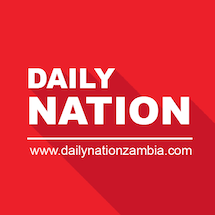
By BUUMBA CHIMBULU
ZAMBIA’S 2020 national budget has reduced in real terms by 15.7 percent following the steady increase of the inflation rate.
Annual inflation rate for April 2020 shot up to 15.7 percent.
In January this year, inflation stood at 12.5 percent but moved further up in February to 13.9 per cent before getting to 14.0 per cent in March.
As for the Government, increased inflation rate means the size of the 2020 budget has reduced in real terms by 15.7 percent, says Bridges Limited Managing Consultant, Chibamba Kanyama.
Zambia’s 2020 approved national budget stands at K106.0 billion.
Mr Kanyama indicated that whereas emoluments could remain the same as projected in the budget provided there were no upward salary adjustments, the Government would have challenges servicing its external debts.
Zambia’s external debt currently stands at US$11.2 billion while domestic debt is around K26.2 billion, excluding Value Added Tax arrears.
“The debt servicing challenges are worsened by the weak Kwacha against other currencies.
“Government is also facing imported inflation as most of the products such as medicines for hospitals will require significant Kwacha cover to maintain the projected stocks,” Mr Kanyama said in a response to a press query.
He also said the underlying problems driving inflation in Zambia made it difficult for the Government to achieve the projected target of six to eight percent range in the medium term.
Mr Kanyama said the corona virus that was driving much of the exchange rate-linked inflation had changed the dynamics.
This, he said, was in addition to the cost-push induced inflation rate, fuelled by electricity tariff hikes last year.
Mr Kanyama observed that the prices of goods and services had been rising rapidly since mid-February, with supermarkets literally removing price stickers on nearly everything on offer.
“The main problem at the moment is that the Central Bank cannot apply its monetary instruments to correct the situation because it will be like drawing blood from a patient just experiencing a sudden anemic condition.
“Ordinarily, the Bank of Zambia would have raised the monetary policy rate and increased the statutory reserve ratios to reduce money supply but you cannot do it now because businesses need some form of stimulation packages in the form of liquidity,” Mr Kanyama said.
He said the covid-19 had crushed Zambia’s hopes that the incoming crop from the most recent farming season would subdue the rate of inflation.
Mr Kanyama stressed that only increased production could bring down inflation but quickly mentioned that this was not expected soon.
“From the onset of the corona virus and partial lockdown of the economy, followed by an about 12 percent devaluation of the Kwacha, Zambians are not only reading about the rising inflation rate but actually observing it,” he said.





